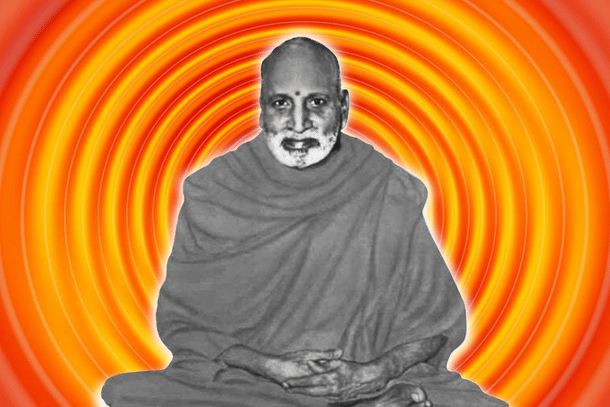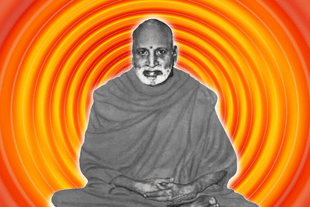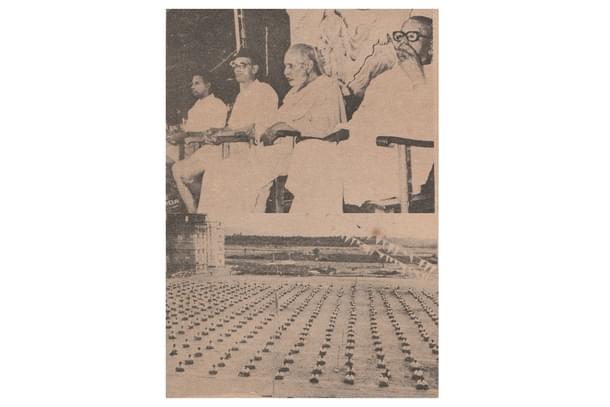Culture
Know Swami Chidbhavananda Maharaj — Whose Commentary On Bhagavad Gita Was Released By Prime Minister Modi Today
Aravindan Neelakandan
Mar 11, 2021, 04:43 PM | Updated 05:38 PM IST
Save & read from anywhere!
Bookmark stories for easy access on any device or the Swarajya app.


During the last months of 1934, Mahatma Gandhi was visiting Tamil Nadu for his flagship programme of ‘Harijan’ welfare.
A few days of stay at Coonoor was planned.
He received a communication from a young sanyasi of the Sri Ramakrishna-Vivekananda movement. He wanted to discuss a few points about the Srimad Bhagavad Gita with Gandhiji .
Gandhiji allocated 10 minutes at 4 pm on a particular date.
The young sanyasi said that in his understanding of the Gita, four children born to the same mother could, by virtue of their innate tendencies and behaviour, become a Brahmin, a Kshatriya, a Vaishya and a Shudra. He asked if Gandhiji accepted this view.
Gandhiji answered in the negative. Birth was important, he said.
The young monk persisted.
"But the Gita clearly states that varna is based on guna and karma".
"That is true but for the social norms by birth I am a Vaishya," Gandhiji answered, "so are my people. They have to do the karmas of the Vaishyas."
"But do not those Brahmins, who are Brahmins by birth, indulge in economic activities these days instead of pursuing only spiritual things,” the monk replied.
"They then are degraded," replied Gandhiji. "They should be considered as such. Of course, such degraded people too should be helped to attain back their spiritual purity once again.”
The young monk was convinced that the interpretation of Gandhiji was wrong.
Yet, he was impressed by the way Gandhiji was multi-tasking.
He was answering the monk, dictating letters and also spinning the charkha with a rhythm.
To the young monk, Gandhiji looked like the personification of the injunction of the Bhagavad Gita "Yoga: karmasu kaushalam”.
The monk later asked Gandhiji to lead the members of the backward castes into a local temple, to which Gandhiji agreed.
Later, we do know that Gandhiji changed his views on varna. He started expressing views similar to those of the young monk.
That monk was Swami Chidbhavananda Maharaj, whose commentary on the Bhagavad Gita is celebrated throughout Tamil Nadu.
The commentary is unique, because apart from the usual Upanishads and traditional Sanskrit sources, the Swami employed heavily the words of Bhagwan Sri Ramakrishna.
The Unifier
Not only Mahatma Gandhi, Swami Chidbhavananda had also met and stayed with the great rishi V V S Iyer, the one time colleague of Veer Savarkar.
Swami Chidbhavananda stayed with Iyer in his Bharadwaja Gurukulam.
Contrary to the Dravidianist leader E V Ramasamy (Periyar), Swami, who himself was very keen on social reformation, did not think in a Brahmin and non-Brahmin binary.
Rather, all the students of the gurukulam stayed the same way; like the sishyas of gurus of the ancient times — one family.
Iyer wanted to know the kind of daily discipline and training imparted in the Ramakrishna Mission's Belur Matt. He wanted to know if the Ramakrishna Matt also imparted training to work for the freedom of the nation.
Swami answered in the negative.
Gayatri For All
Swami Chidbhavananda was also a great educationist and an institution builder. He wrote a large number of plays for children based on characters from Ramayana and Mahabharata and the Puranas.
He also spearheaded a healthy, inter-faith dialogue, even as he exposed and criticised the attempts of the Christian organisations to evangelise.
He condemned unnecessary rituals and birth-based discrimination.
His 1973 book on Gayatri Mantra, where he advocated its meditative recital by women and men alike, created quite a stir.
The Swami, as always, stood his ground.
A Master Of Punctuality
Known for discipline and punctuality, many remember well how Swami started his school functions right on time, even if the chief guest had not arrived.
On one occasion, the guest was the then chief minister of Tamil Nadu, Dr M G Ramachandran.
Dr MGR, who arrived late, saw that the function had started. He marvelled at Swami’s discipline and the spiritual strength that gave him such a straightforwardness.
Without hesitation, he went and apologised to the Swami for his tardiness.
Swami had also met the great Advaitic Paramacharya, Sri Narayana Guru of Kerala.
Sri Narayana Guru asked Swami Chidbhavananda to write a commentary on Thiruvasagam.
After years of work, Swami did write the commentary. The work, which again contains references from the Upanishads and the Gospel of Sri Ramakrishna, is a classic of Tamil spiritual literary heritage.
Anthar Yoga
Swami Chidbhavananda created a new concept called ‘Anthar Yoga’ which involved a day long satsang with bhajans, discourses and shramadaan in any place of choice — usually a temple or a monastery.
Cost-effective and spiritually invigorating, these one-day retreats with no personality cult traps or exorbitant extortion of money became a valuable spiritual weapon for Tamil society fighting against the missionary-induced Dravidianist onslaught.
The Swami And RSS
While many traditional sages and spiritual giants of Tamil Nadu refrained from supporting the Rashtriya Swayamsevak Sangh (RSS), even when they expressed their sympathies and support for the organisation in private, Swami Chidbhavananda initially had his apprehensions about the organisation.
But once he came to know the nature of the group, particularly its discipline and commitment to Dharma, he openly supported the RSS.
He was perhaps the first prominent sanyasi in Tamil Nadu to not only openly support the Sangh and participate in its programmes but to also give the premises of his educational institutions for the Sangh camps as early as the 1980s.

In 1980, a 25-day-long summer camp of the RSS was conducted at Thiruvedakam college of Swami Chidbhavananda.
The Swami himself delivered three lectures to the assembled swayamsevaks. He blessed them saying "you are all filled with bhagya”.
He wanted them to be strong in their body and pure in their hearts.
With unity even coconut fibres become strong enough to bind an elephant and hence unity is the call of the hour, he stressed.
The talks, inspirational and spiritually profound, motivated many attendees of the camp to become dedicated workers for the cause of the nation.
Today, with pop-spirituality becoming increasingly dazzling and blinding the eye, Swami Chidbhavananda seems to have been forgotten.
With the launch of his commentary on Bhagavad Gita by the Prime Minister himself on this auspicious day of Mahashivaratri, a Hindu Sanghathanacharya belonging to Tamil Nadu has been brought again to the fore of memory.
Narendra Modi is indeed blessed for having launched this book.
Aravindan is a contributing editor at Swarajya.




